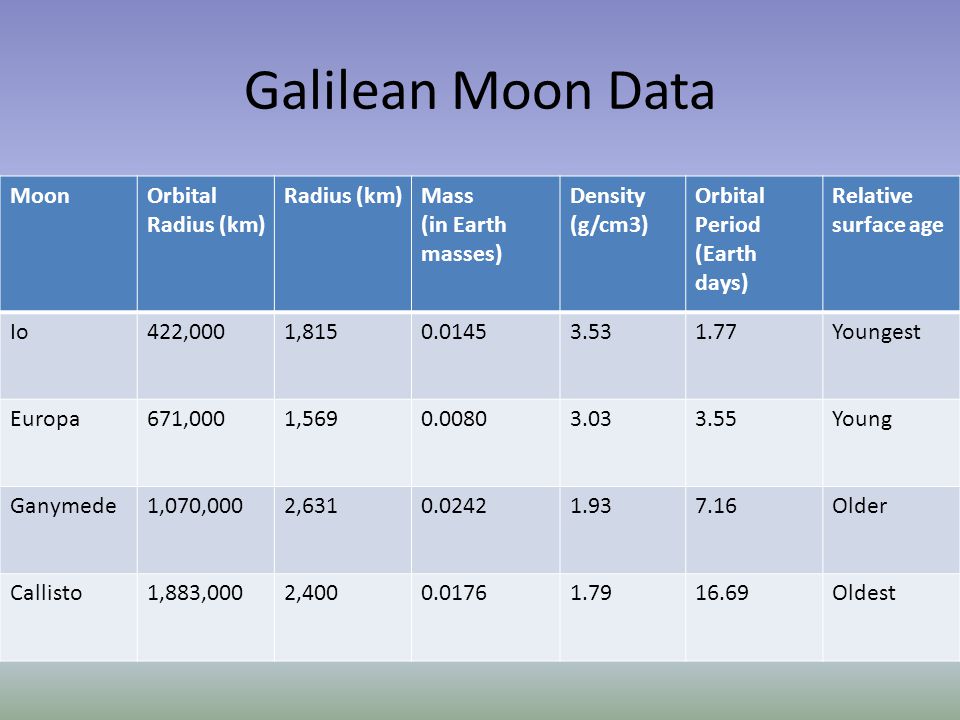
The Galilean moons are the four largest moons of Jupiter appearing like a miniature Solar System indeed obeying Kepler's Laws of Planetary Motion.

We could calculate P2 and a3 using the above numbers, however things would not be obvious. Let's scale the results just as we did for the Solar System. For the Solar System, we chose to use the Earth as our preferred object. That is, we chose to measure the P's and a's in terms of the Earth's period and orbital size. Let's do something similar; we measure everything in terms of Io. To do so, we divide all periods by the period for Io, P = 1.769 days and all orbital sizes by the orbital size for Io, a = 421,600 km. This leads to

As advertised, the Galilean moons obey Kepler's Laws of Planetary Motion.
